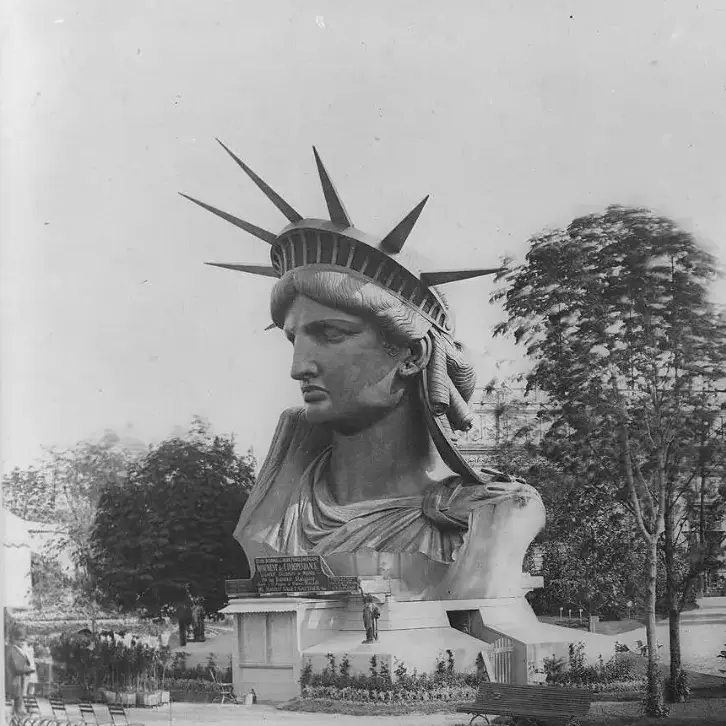The Statue of Liberty is one of the world’s most iconic monuments. Standing tall on Liberty Island in New York Harbor, this statue has been a symbol of freedom and democracy for over a century. In this article, we will explore the fascinating history behind this historic monument, from its origins to the deep meaning embodied in every detail of the statue.
The Origins of the Statue of Liberty
The idea for the Statue of Liberty first emerged from the mind of Édouard René de Laboulaye, a French jurist and historian. In 1865, amidst America’s struggle to abolish slavery, Laboulaye proposed the idea of presenting a gift to the United States to commemorate its 100th year of independence. This gift was intended to strengthen the relationship between France and the United States, as well as celebrate the ideals of freedom embraced by both nations.
To bring his idea to life, Laboulaye contacted a talented young sculptor named Frédéric Auguste Bartholdi. Impressed by the concept, Bartholdi began designing the statue in 1870. His initial inspiration came from the Colossus of Rhodes, one of the Seven Wonders of the Ancient World. Bartholdi envisioned a colossal female figure holding a torch, symbolizing enlightenment.
In 1871, Bartholdi traveled to the United States to select the perfect location for the statue. He chose Bedloe’s Island (now Liberty Island) due to its strategic position at the entrance of New York Harbor, ensuring that the statue would welcome immigrants arriving in America.
The Construction Process of the Statue of Liberty
The construction of the Statue of Liberty was a monumental undertaking that spanned more than a decade. This process involved collaboration between engineers, workers, and donors from both sides of the Atlantic.
The first phase, between 1870 and 1875, saw Bartholdi spending several years refining the design of the Statue of Liberty. To ensure the statue’s structural integrity, he collaborated with Gustave Eiffel, who later became famous for designing the Eiffel Tower, to create the internal steel framework of the statue.
From 1875 to 1884, fundraising campaigns were conducted in both France and the United States. In France, funds were collected through lotteries, performances, and public donations. Meanwhile, in America, Joseph Pulitzer used his newspaper to raise funds for the construction of the statue’s pedestal.The statue’s construction process took place in France between 1876 and 1884. The right hand of the statue holding the torch was exhibited at the Philadelphia Centennial Exhibition in 1876, while the head was displayed at the Paris World’s Fair in 1878. During this period, the statue was built piece by piece in Bartholdi’s Paris studio.

In 1885 and 1886, the Statue of Liberty was shipped to the United States. The statue was disassembled into 350 pieces and packed into 214 crates before being sent to New York. Upon arrival at Bedloe’s Island, the statue was reassembled over four months.
Finally, on October 28, 1886, the Statue of Liberty was inaugurated in a ceremony attended by President Grover Cleveland. This historic event was also celebrated with a grand parade in New York City.
This long and complex construction process demonstrated the extraordinary dedication of both nations to the ideals of freedom represented by this statue.
Symbolism and Meaning of the Statue of Liberty
The Statue of Liberty is not just an architectural marvel, but also a symbol with profound meaning. Every element of this statue was carefully designed to convey messages about freedom, democracy, and hope.
The Meaning Behind the Statue’s Figure

| A Woman Figure | The Statue of Liberty is depicted as a woman wearing a long robe. This female figure was inspired by Libertas, the Roman goddess of freedom. The choice of a woman also reflects the idea that liberty is the mother of all virtues. |
| The Face | The face of the Statue of Liberty is said to be inspired by Bartholdi’s own mother. Its calm and wise expression symbolizes the maturity of American democracy. |
| Crown with Seven Rays | The crown with seven rays represents the seven continents and seven seas. This emphasizes the universality of freedom that transcends geographical boundaries. |
| The Torch | The torch held high in the right hand symbolizes enlightenment. It represents freedom illuminating the world, in line with the statue’s official name: “Liberty Enlightening the World”. |
| The Tablet | In her left hand, the statue holds a tablet. This tablet is inscribed with “JULY IV MDCCLXXVI” (July 4, 1776), the date of the United States Declaration of Independence. It connects the statue to the fundamental principles underlying the founding of the United States. |
The Liberty statue is not only a historical monument, but also an eternal symbol of the values of freedom and democracy that continues to inspire the world. Well, this is the end of our discussion about the history of the Liberty statue. If you are interested in learning everything about America deeper, visit and check this page. At @America you can get to know America and have fun with new friends.













